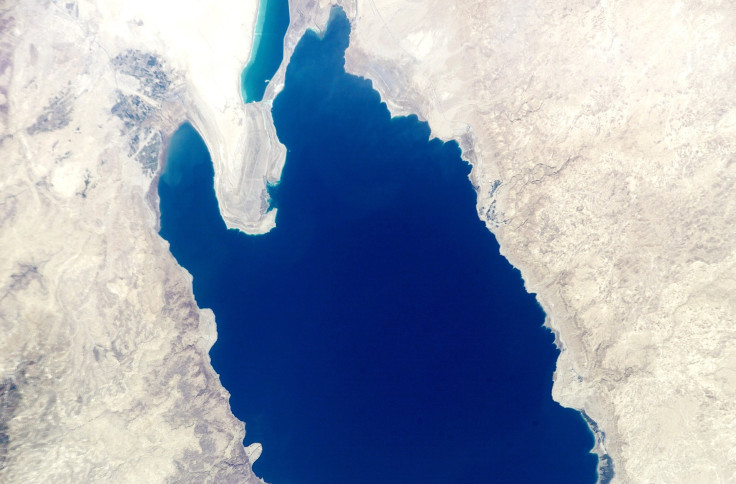How Ancient Humans Affected Environment: Society Caused Dead Sea Erosion

Scientists say they have found the earliest evidence of humans affecting the environment based on samples taken from the Dead Sea that date back thousands of years.
The researchers went down 1,500 feet below the seafloor and analyzed sediment, giving them a window into what the region looked like as long as 220,000 years ago. A study in the journal Global and Planetary Change said the samples showed “intensified erosion” on the Dead Sea’s surrounding slopes about 11,500 years ago that would not have been caused by natural circumstances in the region, including tectonic activity from that era, which implies “human impact on the landscape was the primary driver.”
Read: Ancient Carvings Depict Devastating Comet Crash That Caused Climate Change
That ancient erosion occurred during the Neolithic Revolution when humans were transitioning from their hunter-gatherer culture to one that settled down and relied on agriculture, Israel’s Tel Aviv University explained in a statement. With the shift, the human population exploded.
“Natural vegetation was replaced by crops, animals were domesticated, grazing reduced the natural plant cover, and deforestation provided more area for grazing,” lead researcher Shmuel Marco said in the university statement. “All these resulted in the intensified erosion of the surface and increased sedimentation, which we discovered in the Dead Sea core sample.”
The scientists can see increased erosion from those changes in human society in part from a huge jump in the amount of fine sand that seasonal floods brought into the sea.
“The Dead Sea sedimentary record serves as a reliable recorder of this impact,” the study said.
Drilling down into the Dead Sea, which is the lowest point on Earth’s surface, at about 1,400 feet below sea level, can tell us a lot about the planet’s climate past. The salt content of a sample, for example, tells scientists how dry or wet a certain period of history was. Researchers who recently drilled out some samples found that during two warmer periods — one of them about 120,000 years ago and another about 10,000 years ago, both following ice ages — there would have been severe drought in the Middle East. During those times, the amount of rainfall was slashed at least by a half, and possibly up to about 80 percent. Each drought would have lasted thousands of years.
The scientists can see the difference between wet periods and dry ones in sediment samples from the Dead Sea because when the sea dries up and its depth decreases, there is more salt in the sediment, as the water that held it has evaporated. The opposite is true during wetter times: As seawater increases, there is less salt in the sediment.
Over time, more layers of sediment settle on top of older ones, and the sea bottom preserves the mineral distribution from those ancient times. And the thickness of each layer indicates how long those time periods lasted.
Read: Here's What the U.S. Looked Like Before Environmental Protection Laws
The Dead Sea is not the only place where drilled samples hold clues about the climate’s past. Researchers who recently analyzed glacier samples from a site in the Alps along the Swiss-Italian border say they found evidence of humans polluting the air with lead for the last 2,000 years, beginning well before the Industrial Revolution. They based their conclusions on lead levels in the glacier, which would draw materials from the atmosphere and lock them inside the ice, much as the Dead Sea sediment trapped minerals from the water.
In the case of the glacier samples, which gave the scientists a view of the atmosphere going back two millennia, the ice only showed a lack of lead from 1349 to 1353 when the deadly plague known as the Black Death was so devastating to the population that it slowed commerce and caused a decrease in lead smelting, among other industry activities.
For the Dead Sea researchers who are exploring the ancient human impact on the environment, the next step in their investigation is studying earthquakes. Tel Aviv University said the researchers found evidence sediment layers in their samples had been shaken up, indicating tremors at the bottom of the sea. They hope to use the data to compile a history of earthquakes in the area.
© Copyright IBTimes 2024. All rights reserved.




















